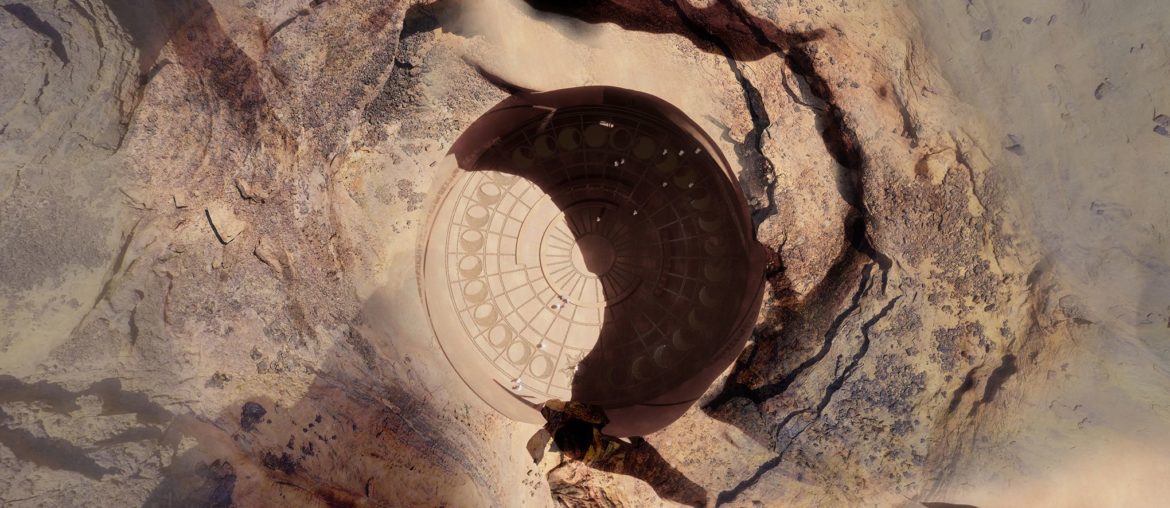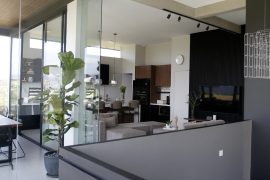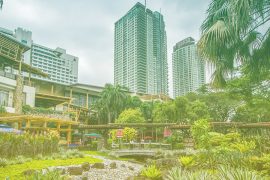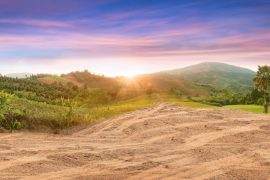Jean Nouvel, a French architect who was chosen as the 2008 Laureate of the Pritzker Architecture Prize for his oeuvre, has this vision for a subterranean luxury resort hotel called Sharaan in the Al-ʿUla, or AlUla, desert in northwestern Saudi Arabia.
Watch this video.
Narration by Jean Nouvel
The imagination and genius of the vision for Sharaan are best expressed in Nouvel’s own narration in the video. In his words, we recognize his powers of observation, his understanding of history, his respect for nature, the breadth of his imagination, the innovative spirit and technical skill that would have to be brought to bear on such an ambitious project, and the depth of ethos of the man.
The Sharaan in Nouvel’s own words (translated from French) –
We’re clearly in one of the cradles of civilization. We’re in a desert. And a desert always means mystery, always means eternity.
AlUla is really an open-air museum. What most struck me beyond the archaelogical features is the work of the wind, the wind on the rock formations.
When you stroll around, you are gobsmacked. I’d never seen anything with the same precision before. And, for me, these particular rock formations and landscapes are actually works of art, natural works of art.
Building here is a real responsibility.
The thing that is peculiar to Sharaan is that it’s a virgin landscape. When you climb up a little bit you discover, through altimetry, that you get readings on the sky and on the horizon lines that are very different. So, my plan deals with that, it starts with that.
My philosophy is always to work with what’s there. When you’re a contextualist, which I am, that’s the starting point.
The wealth of ‘all that’s there’ is made up effectively of the rock-mass, of this inertia, of the water below. Building here means enhancing the site, it means giving it an added feature, it means providing a visual focus, and it also means using all that’s there, using all the features that are there.
And I feel that there’s something, here, that needs revisiting through a form of modernity – and this something is ‘inhabiting the rock’.
I was initially tempted to use some of the motifs created by the wind and to hone in and enhance certain variations in level. And then to go on from there to create solids and hollows, and to create various moucharabies [stone balconies], which are the pattern of memory that all these forms make.
We’re going to need to bring light inside. We want rays of sun. We want to know where we are. We want to see an internal view; we want to see some sort of framing element somewhere. So, we can go and seek out the best horizons, go and look more closely at the rock formation standing opposite.
I also felt it was important to create a very clear visual impact from the sky. Here, I’ve actually created a hollow sphere from which views open out on to lobbies and rooms, but which also creates a sort of large internal patio. And this can be seen from the sky. It’s something you discover there, like a big surprise.
We’ll seek the light, always, always, always.
It’s the principle of the well, what we have here is a lightwell but, after all, it’s the same thing. And anyway, you’re aware of a completely different scale. Because you know you’re in the middle. And you know that 80 meters up, there’s the sky, you can see it.
I think the conditions are there for us to produce an invention, an invention that may well be a way of life.
Our goal is to keep all the inertial features, meaning, to use the lowest amount of energy that’s non essential, that might even be harmful, simply by ventilating the space in the most natural way wherever we can. That’s the basis on which we’re working. It’s based on these particular possibilities, which automatically invent something anyway. So here, in this resort, we’ll be in unique conditions.
Emotion is the basis of architecture and it’s the basis of art. So, it’s clear that on these rock formations, inside these particular rocks, there is something emotional going on. What needs to happen is that when you arrive on the rock, on the skin of the rock, you actually discover the motifs, and you see the light on the rock formation opposite. All these particular emotions form a vocabulary not often used.
I personally think there’s an underlying reason for every piece of architecture.
But here, we’re within a dimension that’s very metaphysical, very poetic, and on a broad geographical scale, as well as within an awareness of a landscape, a world that we want to enhance, that we want to make even more palpable. That’s how I’d put it.
We don’t often get conditions like these; it definitely creates something completely unique. I feel that any building that might be built here without a direct connection to the rocky relief or to rock as matter, will disturb something.
Here, the brief is to disturb, but in a different way, to disturb through emotion, based on a poetic, philosophical, palpable material that’s already there, but that should be hopefully more accessible after interventions like this one.
As soon as you go into the rock like this, as soon as you go into these particular depths, as soon as you go into the geography, as soon as you go into what amounts to a kind of entombment, you’re obviously there – in principle – for eternity.
To know more about the project, read the press release from the Royal Commission for AlUla.
AlUla: The Context of the Sharaan Luxury Hotel
The Sharaan Luxury Hotel will be in AlUla which is considered a unique natural and cultural heritage site and a crossroad of civilizations. Mysterious, with a complex human history spanning 200,000 years, this place during the 6th century BCE became the home of the Nabateans, an ancient tribal confederation that settled in the desert east of the Jordan River in Northern Arabia.
The Nabateans carved buildings, temples and tombs out of sandstone rock. They built an empire in the arid desert. Highly skilled in water engineering, they built dams, cisterns, canals and reservoirs to irrigate their land. Because of their sophisticated know-how in irrigation systems, they were very successful in agriculture in this harsh desert.
They were also skilled traders and facilitated the commerce between China, India, the Far East, Egypt, Syria, Greece and Rome. Caravans from Asia, Africa and Europe that carried spices like frankincense and myrrh, fabrics like cotton and silk, and ebony, crossed in the fertile oasis of AlUla.
This ancient Incense Route is the basis for the interpretation that the Three Wise Men, or the Biblical Magi, were diplomats from the Nabatean Kingdom who followed a star to bring Jesus presents of gold, frankincense, and myrrh.
Jean Nouvel describes himself as a contextual architect, meaning that he designs and creates his structures in response to the literal and abstract landscape. This is why the first thing he said is, “We’re clearly in one of the cradles of civilization. We’re in a desert. And a desert always means mystery, always means eternity.”
The untouched landscape of AlUla has a rich and layered past, steeped in history and culture. An architect like Nouvel, who believes in context and whose starting point in his creations has always been context, has the power to create a structure that would meld with its surroundings, almost concealed within the stunning sandstone canyons, monumental arches, and rock formations of this mysterious land that witnessed the presence of ancient civilizations.
Living in a cave, set to be completed in 2024, would be given a breathtaking meaning by Jean Nouvel.
Read more stories about architecture in this link.




